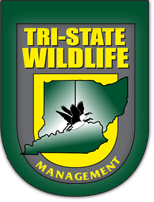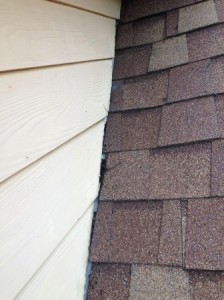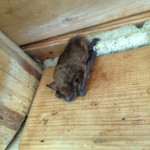For a professional, ethical, and effective bat removal service company, call Tri-State Wildlife Management at (859) 635-0037. Tri-State Wildlife Management is fully licensed and insured, and we stand behind all our work.
Bat Synopsis Bats may be the most misunderstood animals in the United States despite their ecological value. Regardless of their usefulness as the primary predators of night flying insects such as mosquitoes, bats suffer from a bad public image throughout much of the world. Centuries of myths, superstitions and misconceptions lead to fears of dread associated with such characters as Count Dracula and lead to bats being killed simply because they live near people that fear them. Despite their reputation, bats are not aggressive and usually wish to avoid humans. Bat populations the world over are rapidly declining leading to strict implementation of conservation efforts to protect bats and their habitats.
Biology Bats are mammals, having hair, giving birth to living young, and feeding them on milk from mammary glands. They are the only mammals that truly fly and are often seen fluttering around dusk, using their amazingly developed echolocation system (or sonar) to navigate through the night sky and locate and capture insects. More than two-thirds of bat species hunt insects in this way. It is said that a single little brown bat can eat up to 1,000 mosquito-sized insects in one hour, while a pregnant or lactating female has a large enough appetite to eat the equivalent of her entire body weight in a single night.
There are over 900 species of bats around the world with the majority of them residing in the tropics. Bats are second only to rodents in numbers among mammals and comprise almost one-fourth of all mammal species. Northern Kentucky is home to only a fraction of these bats, with the most common being the big brown bat. Due to white-nose syndrome, the little brown bat population has depleted drastically. Although it used to be the most common bat in North America, the little brown bat “is being considered for protection under the US Endangered Species Act”. In the northern Kentucky area, big brown bats are now most prevalent. Unlike little brown bats, big brown bats usually winter over in their roost. As it happens, attics of homes and buildings are a very common roost and hibernation site for big brown bats.
Disease A small percentage of bats will contract rabies, and an even smaller percentage will come in contact with humans or pets. With that said, it is always wise to practice common sense and use caution around them and avoid direct contact, as well as ensure that your pets are properly vaccinated. Bat bites and other physical contact may go undetected by individuals who are asleep, children or pets.
In addition to the foul smell and unsanitary conditions, accumulated bat droppings can support the growth of histoplasmosis, an airborne fungal disease very common in the Tri-State Area. Dry attic environments usually do not support the growth of histoplasmosis spores, however attic cleanouts should never be conducted by a home or business owner. Due to the risk of exposure, guano removal should be left to trained professionals with the proper safety and removal equipment. For more information concerning bat exposure visit, the Center for Disease Control Website at: www.cdc.gov
Damage and Damage Identification Late summer / early autumn is a perfect time of year for Tri-State Wildlife Management (TSWM) to exclude bats, repair damages, and prevent re-entry on homes and other structures. During the winter months, TSWM is only able to compelte preliminary bat exclusion work. This is to ensure bats are able to exit their roost site (your attic) in the spring. Once the weather warms up again, bats once again leave their roost site to hunt, and TSWM can complete the bat exclusion process.
Bats become a nuisance when they roost in large numbers in houses and businesses. Despite their usefulness, discovering or even suspecting bats living in your home or business is unsettling. Two common bat problems in the Greater Cincinnati Northern Kentucky area include a solitary bat accidentally entering the living space of a structure and bats roosting in the attics or chimneys of homes or building. Signs that bats may be living in a structure include seeing bats going in/out of the building, and the presence of bat droppings (guano).
TSWM also offers full and partial attic cleanouts. TSWM employees are trained in safe and effective methods of removing bat guano and contaminated insulation. Due to the risk of exposure to diseases such as histoplasmosis, proper protective gear and equipment is vital to a safe and effective cleanout. TSWM is committed to working with home and business owners to eradicate their nuisance wildlife issue.
Tri-State Wildlife Management – Protecting You, Your Property, and Your Investment.
Do you have a bat problem in your attic? TSWM will permanently exclude bats from your home. Put our experience and expertise to work for you! Serving the Greater Cincinnati / Northern Kentucky Area.
Comments are closed.











